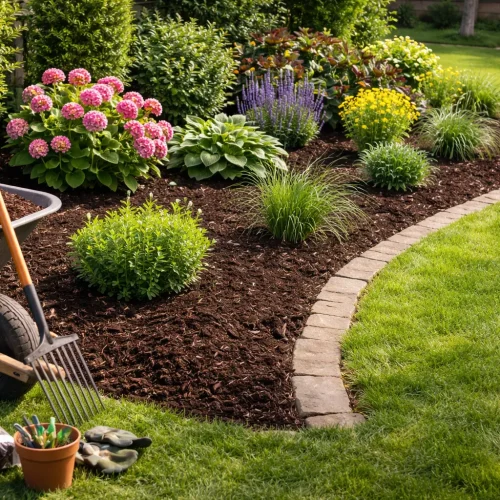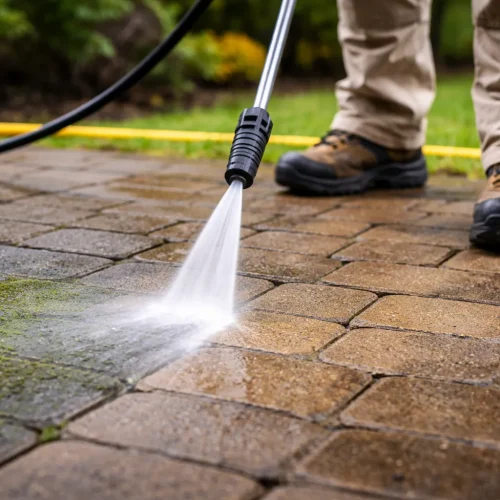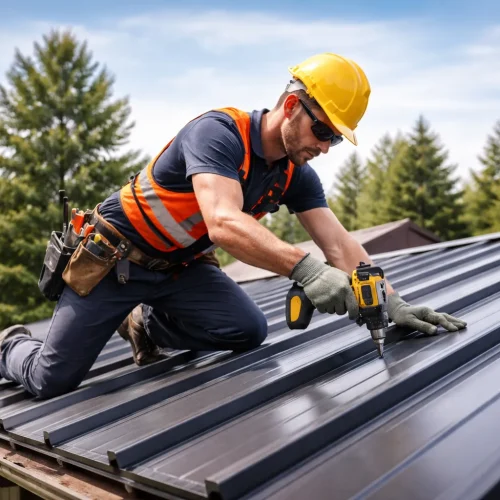
Weather can be unpredictable no matter where you live, but in colder regions like the Midwest, it often feels especially unforgiving. From heavy rain and hail to ice buildup and snowstorms, every season brings challenges that can take a toll on your home. What might start as minor wear, like a few missing shingles or a hairline crack in your chimney, can quickly turn into costly damage if left unchecked.
Protecting your home from weather damage isn’t about reacting to disasters; it’s about staying one step ahead. A little preparation now can save you from expensive repairs and stressful surprises later. Think of it as creating a shield for your house, starting from the roof and chimney and working all the way down to the foundation.
Safeguard Your Roof and Chimney: Your Home’s First Line of Defense
In places like Minneapolis, where long winters bring heavy snow and freezing rain, your roof and chimney take the brunt of every storm. Rain, snow, and strong winds constantly test their durability, making them the most exposed parts of your home’s exterior. That’s why giving them proper attention before the season turns harsh is so important.
Moisture can seep into porous materials such as brick or mortar, freeze, and expand gradually, causing cracks and weakening the chimney structure. If your current system shows signs of leaks, staining, or crumbling mortar, consider scheduling chimney waterproofing in Minneapolis, MN to ensure your home is properly sealed against moisture. A professional waterproofing treatment creates a breathable barrier that repels water while allowing vapors to escape, preventing leaks, structural damage, and mold growth. This helps keep both your chimney and home interior dry and protected throughout the season.
Beyond waterproofing, regular roof inspections are just as important. Look for missing or curling shingles, damaged flashing, or any spots where moisture could enter. If you’re unsure, have a roofing professional perform a seasonal inspection; they can catch small issues early before they lead to costly repairs or heat loss.
Once your roof and chimney are secure, the next step is managing how water moves away from your home.
Keep Water Away: Gutters, Downspouts, and Drainage Systems
Your gutter system might not seem glamorous, but it’s one of the most essential defenses against weather damage. When gutters are clogged or downspouts are misaligned, rainwater can overflow and pool near your home’s foundation. Over time, this pooling can cause cracks, basement leaks, and even structural weakening.
To prevent that, make it a habit to clean your gutters at least twice a year, especially before the rainy or snowy seasons. Remove leaves, twigs, and debris that could block water flow. Check that your downspouts are firmly attached and direct water at least five feet away from the foundation. If you notice frequent clogging, consider installing gutter guards or screens to keep maintenance simple.
For homes on sloped lots or in areas that collect water easily, French drains or underground piping can help move runoff safely away. It’s a small investment that can make a big difference when heavy rain hits.
Seal and Shield: Windows, Doors, and Exterior Walls
After securing your roof and gutters, turn your attention to your home’s exterior openings, windows, doors, and siding. These areas are notorious for letting in drafts and moisture when seals wear out or materials begin to warp.
Start by checking for gaps or cracks around window frames and door edges. Even small openings can let in cold air and water, leading to higher energy bills and potential mold issues. Re-caulk seams, replace worn weatherstripping, and make sure doors close tightly. If your exterior paint or siding looks chipped or faded, refreshing it can add a new layer of protection against rain and humidity.
Another simple but effective step is inspecting your attic insulation. Proper insulation not only keeps your home warmer in winter and cooler in summer, but it also helps prevent condensation that can damage walls or ceilings. Keeping your home tightly sealed goes a long way toward ensuring comfort and durability through every season.
Inspect the Interior: Spot Early Warning Signs of Damage
Even when your exterior looks perfect, hidden damage inside can tell a different story. Take time each season to inspect your home’s interior for signs of moisture or leaks.
Look for water stains on ceilings and walls; these often indicate small roof leaks or condensation issues. Check the attic for damp insulation or dark spots, and inspect the basement for musty odors, which could mean mold or seepage.
If you have a dehumidifier, run it regularly in damp areas like basements or laundry rooms. Keeping humidity below 50% helps prevent mold growth and wood rot. For a deeper look, you can use a moisture meter or hire a home inspector to identify problems you might not see. The earlier you catch moisture issues, the easier and cheaper they are to fix.
Manage the Landscape: Protect the Perimeter
Your yard and surrounding landscape can either work with you or against you when it comes to weather protection. Proper grading, drainage, and maintenance can make a huge difference in how well your home withstands the elements.
Make sure the ground slopes slightly away from your foundation so rainwater flows outward rather than pooling near the base of your home. Trim trees and remove weak branches that could snap under heavy snow or wind. During storm season, secure patio furniture, grills, and decorative items so they don’t become dangerous projectiles.
As temperatures drop, disconnect garden hoses and cover outdoor faucets to prevent frozen pipes. If you have an air conditioning unit outside, consider covering it to keep out debris and snow. Small outdoor precautions can prevent big indoor headaches later on.
Conclusion
Protecting your home from weather damage isn’t just about repairs; it’s about prevention and peace of mind. A few hours of preparation before the season changes can save you from major expenses down the road.
Start from the top: inspect your roof and chimney, ensure your gutters are clear, seal your windows, and keep an eye on your interior for warning signs. Don’t forget that the outdoors landscaping and drainage matter just as much as what’s inside your home.
No one can control the weather, but you can control how well your home stands up to it. By taking these simple, proactive steps now, you’ll ensure your home stays strong, dry, and comfortable no matter what the forecast brings.












